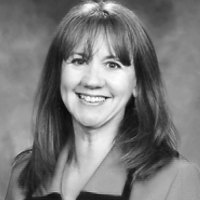Question
Should kids with severe apraxia of speech be given 1:1 therapy or group therapy in school?
Answer
It is the recommendation of the American Speech-Language Hearing Association (ASHA) that children with childhood apraxia of speech (CAS), particularly children with severe CAS, be given 1:1 therapy regardless of the setting. In the 2007 technical report (which can be found at www.asha.org/docs/pdf/TR2007-00278.pdf), ASHA very eloquently summarizes the current thinking regarding treatment:
"Given the need for repetitive planning, programming, and production practice in motor speech disorders, clinical sources stress the need for intensive and individualized treatment of apraxia, especially for children with very little functional communication. There is emerging research support for the need to provide three to five individual sessions per week for children with apraxia as compared to the traditional, less intensive, one to two sessions per week (Hall et al., 1993; Skinder-Meredith, 2001; Strand & Skinder, 1999). Ideally, this should be done in as naturalistic an environment as possible to facilitate carry-over and generalization of skills. Although home practice is critical for optimal progress, it cannot take the place of individual treatment provided by a speech-language pathologist who has expertise in motor speech skill facilitation. For the diverse backgrounds of children seen for early intervention, including their stages of psychological/emotional development, the Committee sees value in endorsing a treatment plan for optimum progress based on provision of intensive therapy.
Individual differences among children will also underlie rationale for changing the form, content, and intensity of treatment throughout the course of intervention. If toddler and preschool-age children are seen for early intervention that targets their speechmotor deficits, the frequency of treatment may be able to be reduced over time. As long as the primary goal is to improve the motoric aspects of the child's speech production (i.e., more time for motor practice), individual therapy should be the preferred approach regardless of age. For children whose severity of involvement has decreased and whose treatment goals have begun to move toward language and pragmatic skills enhancement, a combination of both individual and small group therapy may also be optimal for some children, providing that a treatment focus is maintained on speech production."
Sue Caspari, M.A., CCC/SLP, is a speech-language pathologist working in private practice in the Philadelphia area. Over the years, Sue has worked with children and adults with neurogenic speech and language disorders in early intervention, school, and hospital settings, including the Mayo Clinic. In Sue's current practice, she works primarily with, and as a consultant and advocate for, children with severe speech production disorders, primarily childhood apraxia of speech (CAS). Sue has spoken on apraxia of speech at national conferences such as the ASHA annual meeting, has published papers on apraxia of speech, and gives workshops on CAS. In addition to her clinical practice, Sue works as an educational software development and marketing consultant. Sue is a member of ASHA's Neurophysiology and Neurogenic Speech and Language Disorders Special Interest Division, is an associate member of the Academy of Neurologic Communication Disorders and Sciences, is licensed in the state of Pennsylvania, and holds a Pennsylvania teaching certificate for the speech and hearing impaired.

